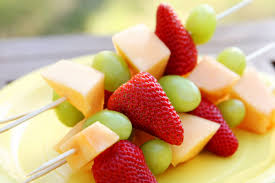Feeding the Mind and Body
Shortly after I moved to California, my best friend began dating a guy who was “into” food. This was a new concept to me, and, frankly, I found it unsettling. An apple was an apple. A boiled ravioli was no better or worse than a freshly made one. Iceberg lettuce was a fine salad. I used to make fun of the hours he would spend going to the farmers’ market to get just the right kind of chard, or hand-rolling pasta. Are you kidding me? Just boil a 99 cent package of spaghetti!
But something began to happen the longer I lived in California. I began to actually notice the difference between a good apple and, well, a not-so-good one. And, right along with that, I began to take an interest in cooking – well.
It started with a few new cookbooks, a few magazine subscriptions, and before I knew it, I was having people over regularly to try out my creations. I still have never made pasta, but I have definitely made a lot of homemade bread, sauces, and salads – both with and without iceberg lettuce. In fact, I started a blog www.soeasyhomemade.wordpress.com to keep track of my recipes, since my friends were always asking, “How did you make this?”
It will come as no surprise to you then that I take a great joy in feeding the people who attend my workshops. In fact, two of my most horrific memories over the years of providing professional development both revolve around lunch mishaps (namely, lunch not showing up on time). Not events running over time, people not showing up, or critical evaluation feedback. Nope. What I remember with shame are the times I left participants hungry.
Feeding people who are in your care while you are facilitating goes beyond the idea of simply showing hospitality. People, both psychologically and physiologically, need to be fed in order to concentrate on the material at hand. Hungry minds wander down to rumbling bellies. The energy that good food and refreshing drinks provide set everyone up to feel their best, and do their best work.
So here are my tips for nourishing participants. I encourage you to try one or all of these at your next meeting or workshop and notice if you see a difference:
- Ask participants in advance if they have any dietary restrictions and then make sure you provide choices that offer something for everyone (e.g. vegetarian, vegan, gluten free, nut allergies, etc.)
- Focus on bringing in snacks that are healthy and provide long-lasting energy. Trade out chips, sodas, and candy for:
- Veggie sticks with humus or dip
- Fresh fruits like bananas, tangerines, or fruit salad
- Yogurt with granola
- Trailmix with nuts, raisins, (and a few M&M’s!)
- Hard boiled eggs or cheese sticks
- Lemon or cucumber water
- Make the spread look appealing by using a tablecloth, cute plates, napkins, or simply putting a vase with fresh flowers on the table
- Label all of the foods so that people with allergies can choose accordingly
- Refresh the snacks and add new ones throughout the engagement (e.g. put the trailmix out on the tables later in the day)
Oh, and the bonus benefit of feeding your participants? You get to eat better, too!
